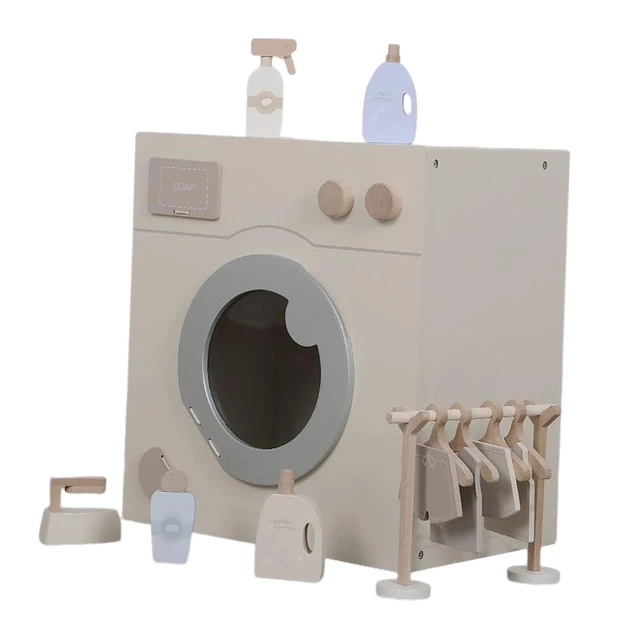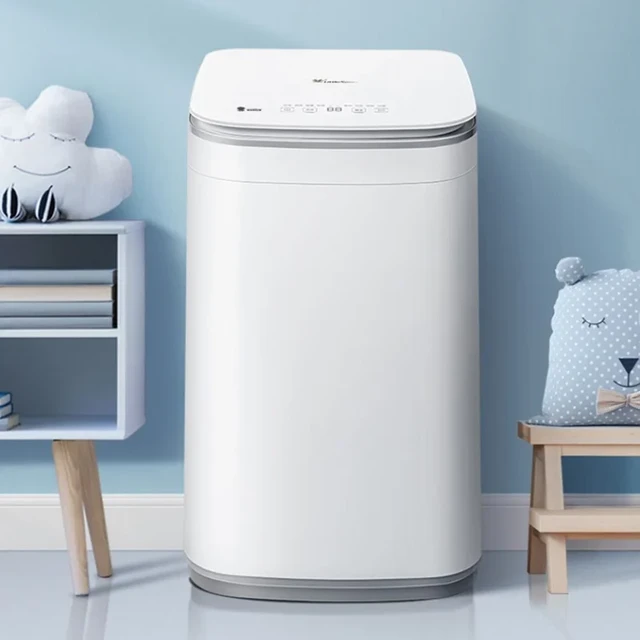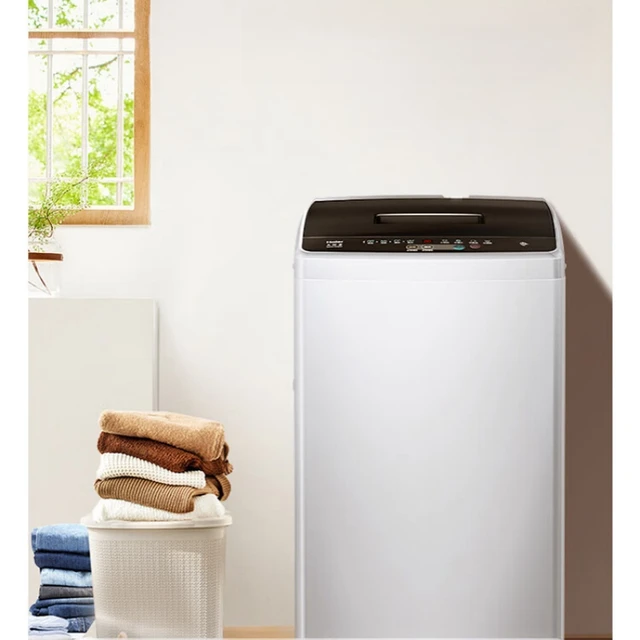Have you ever wondered if you’re loading your washing machine correctly? Properly filling your washing machine is crucial for achieving clean clothes and maintaining the appliance’s efficiency. Overloading can lead to poor wash results, increased wear and tear, and even damage to your machine. On the other hand, underloading might seem wasteful and inefficient. So, how full should a washing machine be for optimal performance? Let’s explore the guidelines for various types of washing machines to help you make the most of your laundry routine.
Understanding Washing Machine Capacity
Washing machine capacity is a key factor in determining how full your machine should be.
Rated Capacity
Washing machines come with a rated capacity, typically indicated in kilograms. This figure represents the maximum weight of laundry that the machine can handle per cycle. Understanding your machine’s rated capacity helps you gauge the amount of laundry to load without exceeding the limit. For instance, a washing machine with a 7 kg capacity should ideally handle around 7 kilograms of dry laundry per load.
Types of Laundry
Different types of laundry items, such as clothes, towels, and bedding, have varying densities and water absorption rates. Light, loosely woven fabrics might take up more space but weigh less, while dense, heavy fabrics like towels can weigh more but occupy less volume. It’s essential to consider both weight and bulk when deciding how full to fill your washing machine.
Front-Load Washing Machines
Front-load washing machines operate differently from top-loaders, and their loading guidelines reflect these differences.
Loading Recommendations
For front-load washing machines, it’s recommended to fill the drum about three-quarters full. This allows enough space for the clothes to tumble and ensures thorough agitation and rinsing. Overloading can prevent clothes from moving freely, resulting in inadequate cleaning and potential strain on the motor and drum. Conversely, underloading can cause imbalance issues and inefficient use of water and energy.
Benefits of Proper Loading
Properly loading a front-load washing machine offers several benefits. Adequate space for tumbling helps remove dirt and stains effectively. It also reduces the likelihood of clothes becoming tangled or damaged. Additionally, following the recommended loading guidelines can extend the lifespan of your machine by reducing mechanical stress and wear.
Top-Load Washing Machines
Top-load washing machines have different dynamics, and their loading capacity varies accordingly.
Loading Guidelines
For top-load washing machines, the general rule is to fill the drum no more than two-thirds full. This allows the agitator or impeller to work efficiently, moving the clothes through the water and detergent. Too much laundry can hinder this movement, resulting in poorly cleaned items and potential damage to the machine. Underloading, although less common, can still cause imbalance and affect cleaning performance.
Advantages of Proper Loading
Following the proper loading guidelines for top-load machines ensures that clothes are evenly distributed, improving wash results. It also prevents overworking the agitator or impeller, which can lead to mechanical issues. Adequate space in the drum promotes better agitation, water circulation, and rinsing, leading to cleaner, fresher laundry.
High-Efficiency (HE) Washing Machines
High-efficiency washing machines, both front-load and top-load, have specific loading recommendations to maximize their performance.
HE Washer Capacity
High-efficiency washers use less water and energy compared to conventional models, making proper loading even more crucial. For best results, fill the drum about two-thirds to three-quarters full. This provides enough room for effective tumbling and cleaning action. Overloading an HE washer can compromise its efficiency, while underloading can lead to wasted water and energy.
Enhancing HE Washer Performance
To enhance the performance of your HE washing machine, distribute the laundry evenly in the drum. Avoid piling clothes in a single spot, as this can cause imbalance and disrupt the wash cycle. Using the right amount of HE detergent is also essential, as too much detergent can lead to residue build-up and reduced cleaning effectiveness.
Signs of Overloading
Recognizing the signs of overloading can help you avoid potential issues with your washing machine.
Mechanical Strain
Overloading your washing machine can cause significant mechanical strain. Common symptoms include unusual noises, excessive vibrations, and long wash cycles. The machine may also struggle to spin properly, leaving clothes overly wet at the end of the cycle. If you notice these signs, it’s a clear indication that you’ve overloaded the drum.
Poor Wash Results
Another consequence of overloading is poor wash results. Clothes may come out still dirty, with stains and detergent residue remaining. Overloaded machines can’t agitate or rinse clothes effectively, leading to subpar cleaning performance. Ensuring you don’t exceed the recommended load limit will help prevent these issues.
Signs of Underloading
While overloading is more commonly highlighted, underloading can also affect your washing machine.
Imbalance Issues
Underloading can cause imbalance issues during the spin cycle. With fewer items to balance the load, the drum may wobble or bang against the machine’s sides. This can lead to wear and tear, potentially damaging the drum and internal components. Adding a few more items to the load can help distribute the weight evenly.
Inefficiency
Underloading your washing machine is inefficient in terms of water and energy usage. Running a half-empty machine wastes resources, especially if you frequently do smaller loads. Consolidating laundry to maximize the drum’s capacity can optimize your machine’s efficiency, saving both water and energy.
 Tips for Optimal Loading
Tips for Optimal Loading
Following these tips can help you achieve the best results from your washing machine.
Balance the Load
Balancing the load is crucial for both front-load and top-load machines. Mixing large and small items can help distribute the weight evenly. For example, combining towels with lighter clothing prevents any single item from dominating the load. This promotes efficient movement and better cleaning.
Avoid Overstuffing
Avoid stuffing clothes tightly into the drum. Clothes need space to move and tumble during the cycle. If you find yourself forcing items into the machine, it’s a sign you’ve overstuffed it. Removing a few pieces will ensure better wash results and reduce wear on your machine.
Use the Right Program Settings
Using the correct program settings for your laundry load can enhance cleaning performance. Many machines offer specialized cycles for different fabrics and soil levels. Selecting the appropriate cycle ensures optimal agitation, water levels, and spin speeds, enhancing the overall effectiveness of your wash.
Maintenance and Care
Proper maintenance and care of your washing machine can extend its lifespan and improve performance.
Regular Cleaning
Regularly cleaning your washing machine prevents build-up of residues and mildew. Run a cleaning cycle with an appropriate washing machine cleaner to remove detergent deposits and keep the drum fresh. Wiping the door seals and detergent drawers ensures they remain free of mold and grime.
Inspections and Repairs
Conduct periodic inspections to check for wear and tear. Look out for signs of damage such as frayed hoses, clogged filters, or unusual noises. Addressing minor issues promptly can prevent them from escalating into costly repairs. Regular maintenance checks by a professional can also help keep your machine in top condition.
Conclusion: Optimal Laundry Practices
Understanding how full a washing machine should be makes a significant difference in laundry results and machine longevity. Whether you own a front-load, top-load, or high-efficiency washing machine, following the recommended loading guidelines ensures better cleaning, reduced strain, and efficient use of water and energy. By balancing loads, avoiding overstuffing, and selecting the correct program settings, you can maintain your machine’s optimal performance and enjoy cleaner, fresher laundry. Happy washing!
Final Thoughts
Laundry is a regular task, but understanding how full should a washing machine be can significantly enhance both efficiency and results. Properly loading your machine according to its guidelines ensures superior wash performance and prolongs the appliance’s lifespan. Consistent maintenance and aware loading practices are essential for maximizing your washing machine’s capabilities and ensuring it serves you effectively for years to come.



